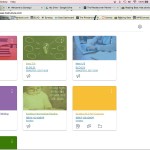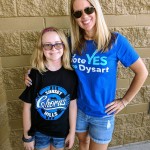The 2020-2021 school year is coming to a close. Just like saying goodbye to the 2020 calendar year, I don’t think 2021-2022 is going to be a silver bullet of “normalcy.”
I am hoping for some things to go back to the way they were “before” COVID:
- Live performances
- Singing in the music room
- A consistent schedule
- Seeing students every day
- Playing instruments
- Playing singing games—especially passing games
- In-person faculty meetings and Professional Development
- In-person conferences
- Celebrating Arizona’s newly certified and renewed National Board teachers
Lately, I’ve been reflecting on things that I want to keep from this experience. I had a few ideas but wanted a broader sample. I posted on two music teacher groups that I am part of on social media and got some tremendous feedback.
The most popular response was technology integration. Many teachers who responded said these are tools they would not have even investigated if the pandemic hadn’t occurred, but they will be valuable moving forward. Some of the responses included:
- Using slide decks
- Google Slides
- PowerPoint
- Keynote
- Interactive Platforms
- Pear Deck
- Mentimeter
- Flip Grid
- Screen Castify
- Padlet
- Consistent use of Online Learning Management systems for in-person, remote, and absent students.
- Schoology
- Seesaw
- Google Classroom
- Recording lessons
- Reinforcement of skills
- Teacher voice health
- Online and absent students
- Substitute lessons
- Increased collaboration with colleagues
- Locally and globally
- Consolidating and digitizing resources
- Save space in the music room
- Makes teaching on a cart much easier
- Video conferencing
- To help with access for everyone
- To bring in special guests to my classroom
- To reach rural and remote areas
The response that made the most significant impact on me was focusing on student choice and relationships.
As an elementary specialist, I only see students once per week for 30 minutes of instruction. Building relationships is challenging. I wrote about it here.
The different ways that distance learning was implemented made an excellent opportunity to learn about our students in ways we had not before March 2020. I learned how to create a choice board for assignments that practice skills and introduce music history. I gave some very flexible, open-ended tasks and was amazed at the product my students turned in. One project was to make an instrument from materials found at home. I received video recordings of students playing a shaker made from a plastic container w/ popcorn inside. A photo collage from a student who constructed a guitar. An original song accompanied by an instrument made from a Clorox wipe container and a face mask called the COVID Pandemic eliminator.
The most crucial thread was that students had time to be creative and the opportunity to choose how they responded.
Music should be an activity that builds community, feelings of wellbeing, and connection to others. If we take nothing else away from this challenging season, I hope we leave knowing that we have rediscovered parts of our society and communities that were lacking.
Let’s build better relationships.
Treat everyone as if they are doing the best they can.
Help, don’t hinder growth in students and colleagues.
What things have you learned during pandemic teaching that you will carry forward?
photo credit: https://vocal.media/motivation/meaning-of-don-t-throw-the-baby-out-with-the-bathwater










Comments 2
The biggest thing I will take with me is integrating technology when possible and applicable. In pre-COVID times I had integrated technology occasionally, but this year there was no other choice than to integrate technology, and I learned a lot from these experiences.
Another takeaway I have from this year is that while students are excited to learn on technology, nothing is a substitute for a teacher who is excited and passionate about what he or she is teaching. I thought that simply integrating technology would be enough to keep students engaged, but I have had the best results this year when I have been more engaging than the technology.
I completely agree Caitlyn. NOTHING can replace a qualified and engaged educator when it comes to keeping students engaged. The tech tools are just that, tools.